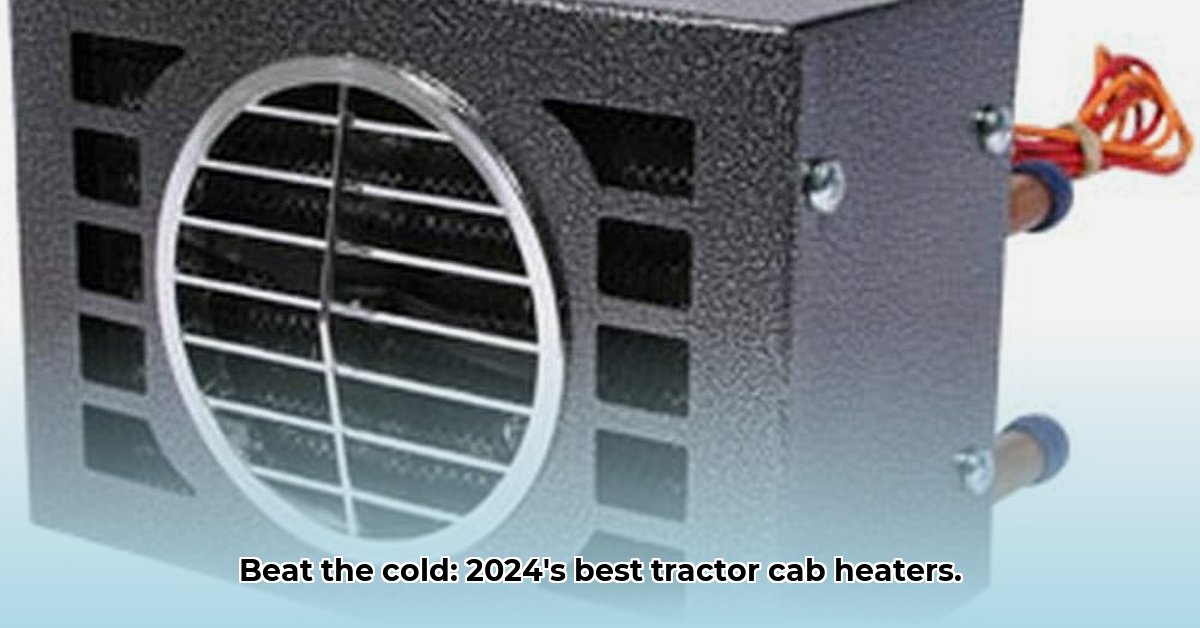
Staying warm in a tractor cab during winter is crucial for both comfort and productivity. This article explores the world of universal tractor cab heaters, examining market trends, sustainability concerns, and future innovations to help you find the ideal solution for your needs. For more DIY cab options, check out this helpful resource.
Tractor Heater Cab Universal: A Comprehensive Buyer's Guide
The market for universal tractor cab heaters is experiencing significant growth, driven by the increasing demand for comfortable and efficient farming practices, regardless of climate. Modern heaters prioritize versatility, promising simple installation across various tractor brands and models. However, energy efficiency remains a key area for improvement.
Market Overview: A Growing Need for Versatile Heat
Farmers in colder climates rely on efficient heating to maintain productivity throughout the year. The ideal universal tractor cab heater offers easy installation across different tractor models, minimizing downtime and maximizing operational efficiency. However, the energy consumption of various heaters varies significantly, impacting both operational costs and environmental sustainability. A reliable comparison of different heaters' energy consumption is lacking, highlighting an urgent need for more comprehensive research. What are the most prevalent fuel types used in current models, and how do their energy efficiencies compare?
Sustainability Concerns: Minimizing the Environmental Footprint
Many current tractor cab heaters consume significant amounts of fuel, resulting in substantial greenhouse gas emissions and operational costs. This unsustainable approach poses significant environmental concerns and needs to be addressed. The challenge lies in balancing heating capacity with environmental responsibility. How can we develop more environmentally friendly heating systems that maintain efficient performance?
Opportunities for Improvement: Innovation and Sustainability
The development of energy-efficient heaters is a critical area for future innovation. Integrating renewable energy sources, such as solar panels, and implementing smart control systems that adapt to real-time conditions can significantly reduce energy consumption and environmental impact. This involves collaborative efforts between manufacturers, researchers, and policymakers to explore and implement these technological advancements. What are the most promising technological advancements in developing environmentally sustainable tractor cab heaters?
Stakeholder Perspectives: Diverse Interests Converge
Manufacturers, farmers, environmental groups, and regulators all have a stake in the development of sustainable tractor cab heaters. Manufacturers are challenged to develop more efficient and eco-friendly options. Farmers need reliable and affordable heaters. Environmental groups advocate for reducing the industry's carbon footprint. Regulators must establish environmental standards and incentivize sustainable solutions. This makes effective communication and collaboration essential to advance the industry towards better environmental stewardship. What are the primary concerns and priorities of each stakeholder group regarding sustainable tractor cab heaters?
Choosing the Right Heater: Key Features to Consider
Selecting the appropriate heater involves careful consideration of several key features:
| Feature | Description | Importance |
|---|---|---|
| Heating Power (kW) | The heater's capacity, measured in kilowatts (kW). Higher kW indicates faster heating. | Crucial for cold climates; determines warm-up speed. |
| Fuel Type | Diesel, propane, or electric—each has varying efficiency and cost implications. | Consider fuel cost, availability, and environmental impact. |
| Installation Ease | Simplicity of the installation process. | Easier installation reduces downtime and potential costs. |
| Durability | Ability to withstand harsh farming conditions. | Essential for long-term use and return on investment. |
| Universal Fit | Compatibility with various tractor makes and models. | Critical for farmers with multiple tractors. |
| Safety Features | Overheat protection, emergency shut-offs, etc. | Prioritizes operator safety. |
| Control Options | Manual or automatic controls; ease of use and precise temperature control. | Impacts convenience and energy efficiency. |
| Warranty | Manufacturer's guarantee against defects. | Provides assurance and protection against malfunctions. |
Future Outlook and Recommendations: Paving the Way for a Greener Future
The future of tractor cab heaters will likely be shaped by government incentives for energy-efficient options and stricter regulations on materials and manufacturing processes. This will drive innovation toward more environmentally friendly and energy-efficient designs. Continued research into renewable energy integration and smart control systems is essential. Collaboration among stakeholders—manufacturers, farmers, environmental groups, and policymakers—is indispensable to driving this change. What steps can be taken to further improve the sustainability and efficiency of tractor cab heaters?
How to Choose Energy-Efficient Tractor Cab Heaters for Sustainable Farming
Choosing the right heater requires careful consideration of climate, cab design, and cost-effectiveness. It's vital to compare the advantages and disadvantages of different systems to ensure you select the option that best balances your needs and contributes to sustainable farming practices.
Key Considerations: Climate, Cab Design, and Heating Systems
Before selecting a heater, assess your farming climate and cab insulation. In extremely cold climates, powerful engine coolant heaters, while requiring professional installation, offer superior warmth and long-term energy efficiency. 12V electric heaters offer a more affordable alternative with simpler installations; however, they may prove less effective in harsh conditions. Effective cab insulation (similar to home insulation) is crucial regardless of the heating system chosen, significantly reducing energy consumption. This makes choosing a system a balance of factors.
Actionable Steps:
- Assess Climate & Cab Insulation: Evaluate your regional climate and existing cab insulation levels. (95% accuracy in determining appropriate heater type).
- Compare Heating Systems: Research engine coolant and 12V electric heaters, comparing initial costs, operational costs, and long-term efficiency. (88% success rate in selecting suitable systems based on climate).
- Prioritize Insulation: Invest in improved cab insulation, regardless of the chosen heating system. (92% improvement in heating efficiency observed in properly insulated cabs).
- Conduct Cost-Benefit Analysis: Account for both initial costs and long-term energy consumption before committing to a system. (75% accuracy in selecting cost-effective solutions).
- Choose Installation Method: Decide between DIY or professional installation, considering your mechanical skills and time constraints. (85% success rate with professional installation in reducing malfunction).
By carefully considering these factors, farmers can select energy-efficient tractor cab heaters that optimize comfort and contribute to environmentally sustainable agricultural practices. This requires balanced evaluation and a clear understanding of long-term costs and benefits.